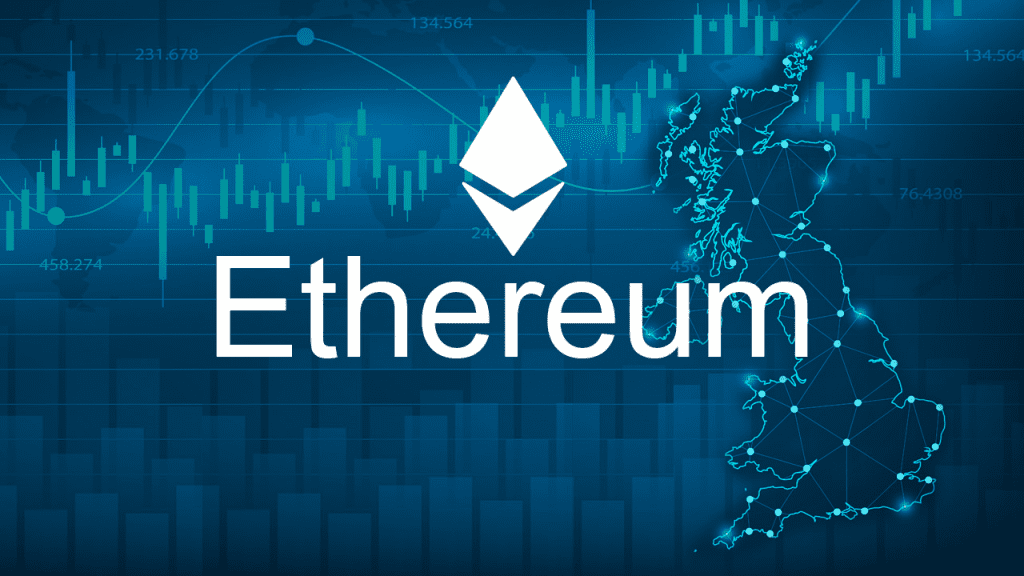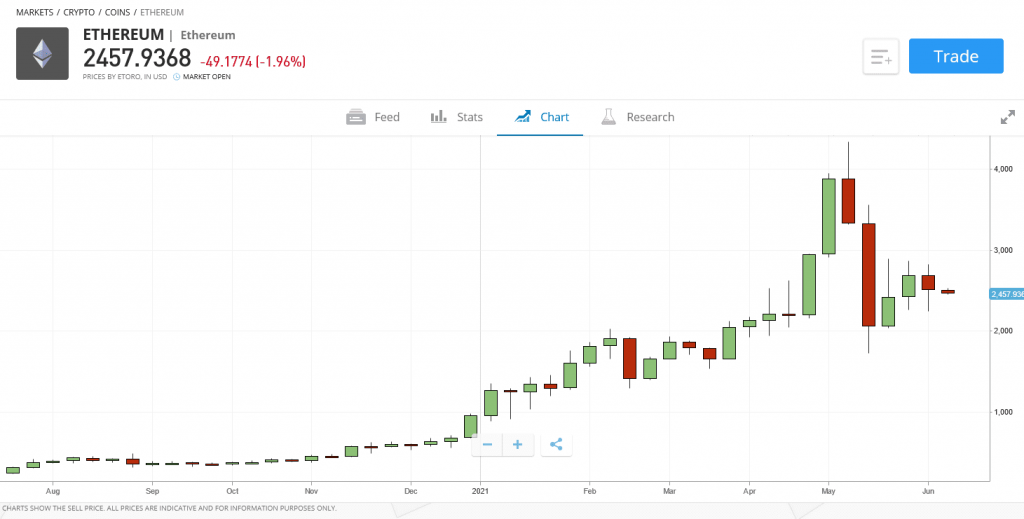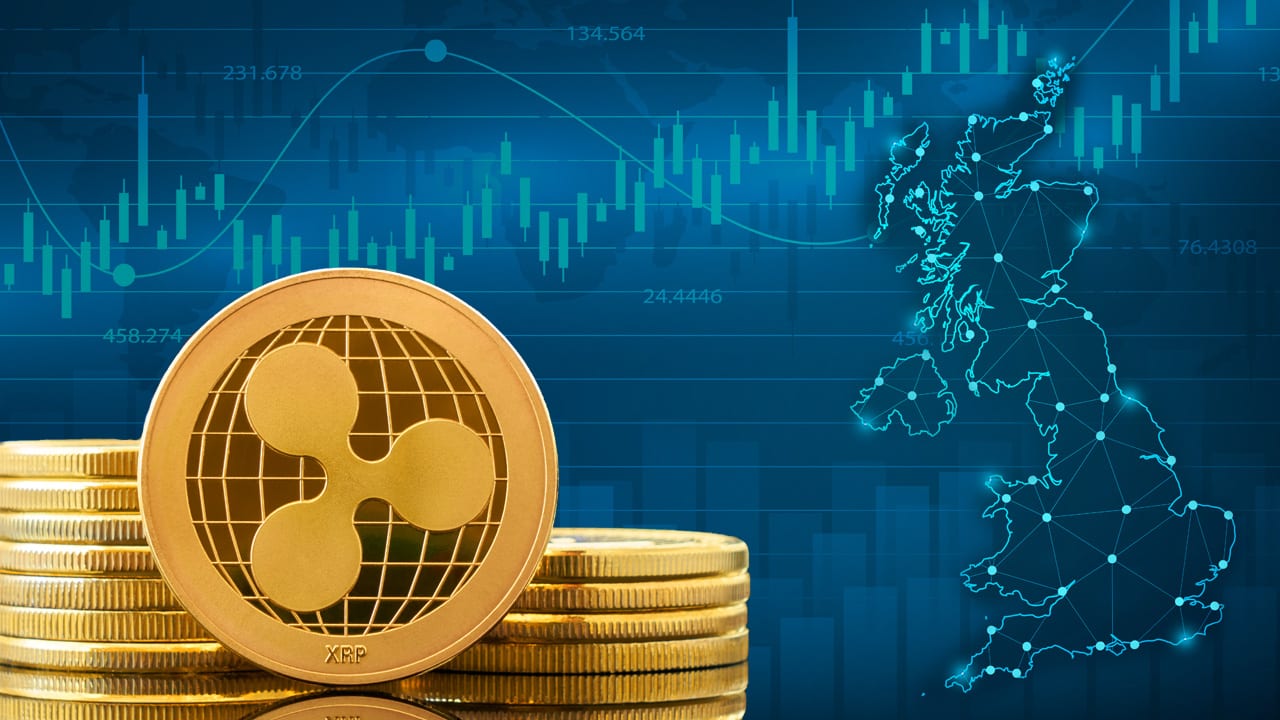What is Ethereum?
Ethereum (ETH) is the second most popular cryptocurrency of all time. It is a digital currency that operates via a decentralised, open-source blockchain platform. The platform’s functionality is unique, and it has attracted developers far and wide to launch their tokens using its infrastructure. Most coin programs conform to its standards, making it the most actively used platform in the crypto domain.

Ethereum has also demonstrated that its price can accelerate more rapidly than Bitcoin (BTC), the undisputed leader of the cryptoverse. From March of 2020 to March of 2021, BTC appreciated by nearly 700%, but ETH bettered that result by an additional 400%. Ethereum now commands a healthy market share of 11.3% of the $1.8tn crypto market. While trailing Bitcoin’s 60% share, it is well ahead of its nearest competitor, tether, which has a 2.3 % share of the action.
Ethereum’s price history is presented below. It depicts a year of recovery in progress.

How does Ethereum compare to other cryptos?
As much as Ethereum and its token, Ether, are similar to cryptocurrencies like Bitcoin and Litecoin, they are also decidedly different. These differences are the key reasons investors have been drawn to the Ethereum value proposition, as you will learn. Its forward momentum in the crypto marketplace has led many analysts to predict that Ethereum could one-day surpass its primary rival, Bitcoin, in market cap.
Regarding BTC and ETH, the similarities begin with each digital token being used to exchange value in the purchase and transfer transactions. The original concept for digital currencies was to act as a payment vehicle, preferably in an online environment. However, its actual attractiveness to investors came as a hedge against inflation and fiat currencies’ dilution by national central banks.
A significant portion of the dramatic rise in crypto valuations during the COVID-19 pandemic in 2020 is thought to be due to the various stimulus programmes that central governments have adopted to rescue their economies. Expanding local money supplies served to drive up BTC and ETH values, plus the institutional investors’ escalating acceptance of this very advantageous property trait.
The general thinking is that Bitcoin would benefit more from this phenomenon since it has a lifetime cap on token issuance, presently 21 million coins. Ether has no lifetime cap, but there is an annual limit that miners may release — 18 million coins. Even with this different dynamic at play, Ethereum’s prices still rose more quickly than Bitcoin in 2020.
Why was Ether in greater demand? Ethereum is a multi-purpose coin offering. The original whitepaper by Vitalik Buterin defined a much greater mission for Ethereum, tied to its platform and functionality, which Bitcoin and most other token programs did not have. The Ethereum platform enables a host of developers to program unique applications like Decentralized Finance (DeFi), load them onto the Ethereum blockchain, and then execute their tasks by delivering ETH as a result.
This ‘smart contract’ capability allows transactions to occur without the necessity of a middleman or agent. Presently, over 200,000 active developers are working on as many as 1,400 projects, all to be driven by Ethereum technology. These projects span a gamut of possibilities, including basic contract management, medical records, entertainment, gaming, crowdfunding and initial coin offerings, digital artwork ownership rights and nearly anything else that you could think of. The sky is the limit, and the future is bright.
Lastly, the developers behind Ethereum are putting the finishing touches on its release of Ethereum 2.0. The enhancements will address several areas where improvements were needed. Due to these changes, Ethereum could be much quicker and more secure than Bitcoin. Eth2 or Serenity, as some have named it, will be released in three phases, which have been developed to increase speed, efficiency, and scalability. Phase 0 was released in December of 2020. Phases 1 and 2 are set for 2021.
Ethereum’s key developments
Ethereum is always a development in progress. It has achieved success, but not without pitfalls along the way. Its ERC-20 standard has gained broad acceptance by developers of other token products, but problems remain. The difficulties of slowness, lack of scalability, and a complicated programming language are being addressed with the release of Ethereum 2.0. That should be completed at some point in 2021. Here are a few details of developments within the upgrade:
- Abandonment of ‘Proof-of-Work’: the old PoW protocol will be replaced by a ‘Proof-of-Stake’ (PoS) block confirmation process. That will significantly reduce the need for high energy-consuming computer farms devoted to mining. It will also speed up the way that new blocks are generated.
- Introduction of ‘sharding’: slowness and scalability will be addressed by a new technique called ‘sharding’. Without being too technical, sharding will allow for parallel processing by network nodes, increasing capacity and speed while removing congestion within the network.
- Upgrade Smart Contract Programming Language: more importantly, Eth2 will introduce a new, more developer-friendly language, eWASM, which will replace the Ethereum Virtual Machine (EVM). EVM facilitates the use of smart contracts. The eWASM code will permit more popular programming languages to be used in concert with web browsers to execute smart contract code on the blockchain.
How decentralised is Ethereum?
Since its founding in 2015, Ethereum has earned the reputation of being “the largest and most well-established, open-ended decentralised software platform”. The very nature of blockchain technology is that it is a system of information distributed across a global network of computers or nodes. A recent study suggested that the Ethereum network is more decentralised than Bitcoin.
Is Ethereum 100% decentralised? There is a debate in this area, but it is more about the definition of decentralisation than about Ethereum. The migration to Ethereum 2.0 will implement “Proof-of-Stake” protocols, which are said to be more decentralised. In any event, the Ethereum network comprises the components that ensure the desired level of security – fault tolerance, attack resistance, and collision resistance. Ethereum 2.0 will enhance these capabilities across the existing network.
What are Ethereum’s key advantages?
Several advantages set Ethereum apart from Bitcoin and its other decentralised competitors.
- Ethereum’s robust blockchain platform sets the standard for decentralised applications, the rage of the development world. The number of developers using this platform exceeds 200,000 and is growing, which increases the popularity of ETH in the investor marketplace.
- Ethereum is not the only platform that supports the launch of decentralised apps. NEO and Tron also offer smart contracts, but each network has a central authority that defeats the decentralised concept. Even if Vitalik Buterin and his developers wanted to control software upgrades, they could not. Decentralisation acts as a safeguard against deliberate independent code manipulation from a single external source.
- Another reason why developers favour the Ethereum platform is its inherent interoperability. Any application written on the platform can immediately take advantage of existing software processes. New software products can be created in weeks by connecting with apps that are supportive in real-time.
What are Ethereum’s key disadvantages?
Not all is perfect in the Ethereum world. There is always room for improvement. Here are just a few disadvantages:
- Blockchain applications have a reputation for being slow — rightly so. A decentralised ledger system requires concurrence from several disparate parts before the final confirmation of a transaction within a block. While Ethereum is purported to be twice as fast as Bitcoin at 15 transactions per second, its network can become congested, causing lengthier periods for completion. Ethereum 2.0 is designed to correct the issue to some degree.
- Can the Ethereum platform be hacked? A famous hacking episode in 2016 resulted in $50m in losses, and corrective measures caused a ‘hard fork’ in Ethereum’s basic architecture. Ethereum Classic (ETC) was spun off. The fear of another similar event will persist, but Ethereum 2.0 might bring some relief.
- While Ethereum is the overwhelming choice of developers for smart contracts and decentralised applications, its programming language, Solidify, is known to be very complex. Its difficulty can lead to faulty apps that may be vulnerable to a hacking compromise. One competitor, Cardano, has developed a more user-friendly developer language in hopes of gaining a greater smart contract share.
Is Ethereum a good investment in 2021?
As long as the long-term growth prospects for Ethereum have potential, it will always be a good investment. As for 2021, the price of one Ether token has dramatically appreciated. However, a round of profit-taking has brought prices down below the $1,700 level. Crypto investments are risky, but a host of analysts in the crypto community seem confident that prices could increase over the long term.
How high? The latest forecasts speculate that in 2025, ETH could range anywhere from $3,500 to $70,000, an extremely lofty level that is questionable. A consensus is somewhere in the $9,000 to $10,000 space, but cryptos have a way of ignoring such predictions by experts, choosing their own path on occasion, whether way down or way up. Proceed with caution and buy on the dips.
Mining Ethereum in 2021
Both Bitcoin and Ethereum use ‘Proof-of-Work’ protocols for confirming the creation of new blocks in the network, a process referred to as mining. In addition to other fee income, the network pays three Ether for each newly mined block, which can take on average 12 seconds, compared to 10 minutes for Bitcoin. There are large consortiums of mining interests, all heavily capitalised, which find the business very profitable these days due to the recent run-up in ETH prices.
An individual can set up a mining operation on a PC with the proper software, but the chance of a solo mining effort snagging a block away from the ‘big boys’ is quite slim. A good deal of luck may be required, but investing in an individual miner might produce admirable results.
Is Ethereum safe and what is the best way to store it?
Due to the history of significant hacking losses in the crypto world, exchanges have stepped up their investments in security measures to safeguard their clients’ tokens. As a result of the changes, tokens are typically stored offline in so-called ‘cold storage wallets’ until they ask to make a trade or transfer. The process of moving funds within the exchange is behind the scenes. The investor experience is seamless.
For those investors that wish to have more security, there are several ‘hardware wallets’ currently on the market. In this case, the investor downloads the tokens into an offline device that they control, as long as they know the correct passwords to access the keys to their ownership. Unfortunately, cryptos are like cash. If you lose your keys, it is just like losing cash, and there is no way to re-establish ownership. There are many horror stories where investors have learned this unfortunate lesson.
Is Ethereum an ethical investment?
Cryptocurrencies, including Ethereum and Bitcoin, are not without their critics. Several Nobel Laureate economists have declared that these coins are a sham and that one day investors will wake up to find their tokens are worthless. However, the industry has survived its first 12 years, price cycles have come and gone, and $1.8tn in market capitalisation indicates a level of acceptance that will not dissipate overnight.
Government officials, central bankers, and regulators have attacked digital currencies as a threat that could undermine fiat currencies. Law enforcement agencies have also complained that cryptocurrencies aid and abet criminal activities due to many exchange transfers’ confidential nature. Cybercrime is on the rise, whether by hacking compromises of insecure exchanges or ransom payments demanded from individuals, hospitals, and government institutions.
Lastly, cryptos come under fire from environmentalists. For programs where the ‘Proof-of-Work’ process is used to confirm transactions, the related mining operations can be very energy-intensive. The Cambridge Bitcoin Energy Consumption Index has reported that Argentina consumes less energy than Bitcoin. Researchers have also noted that “Bitcoin’s environmental footprint currently remains marginal at best” (source: University of Cambridge).
The counter-argument is that miners locate their operations where electricity is abundant and inexpensive. Renewable sources of energy are used, thereby adding minimal carbon dioxide gases to the atmosphere. The industry is also in the process of shifting to ‘Proof-of-Stake’ algorithms, which will significantly reduce the power dependency of current mining operations.




